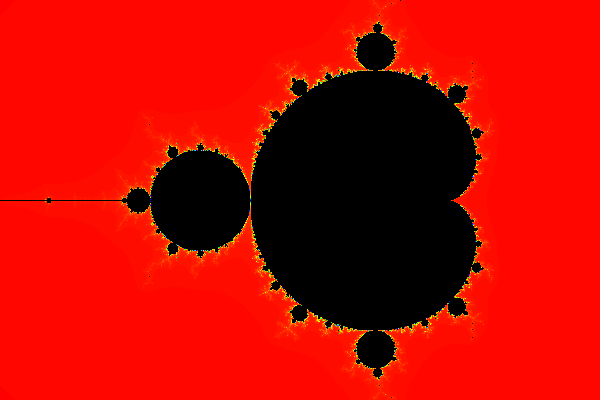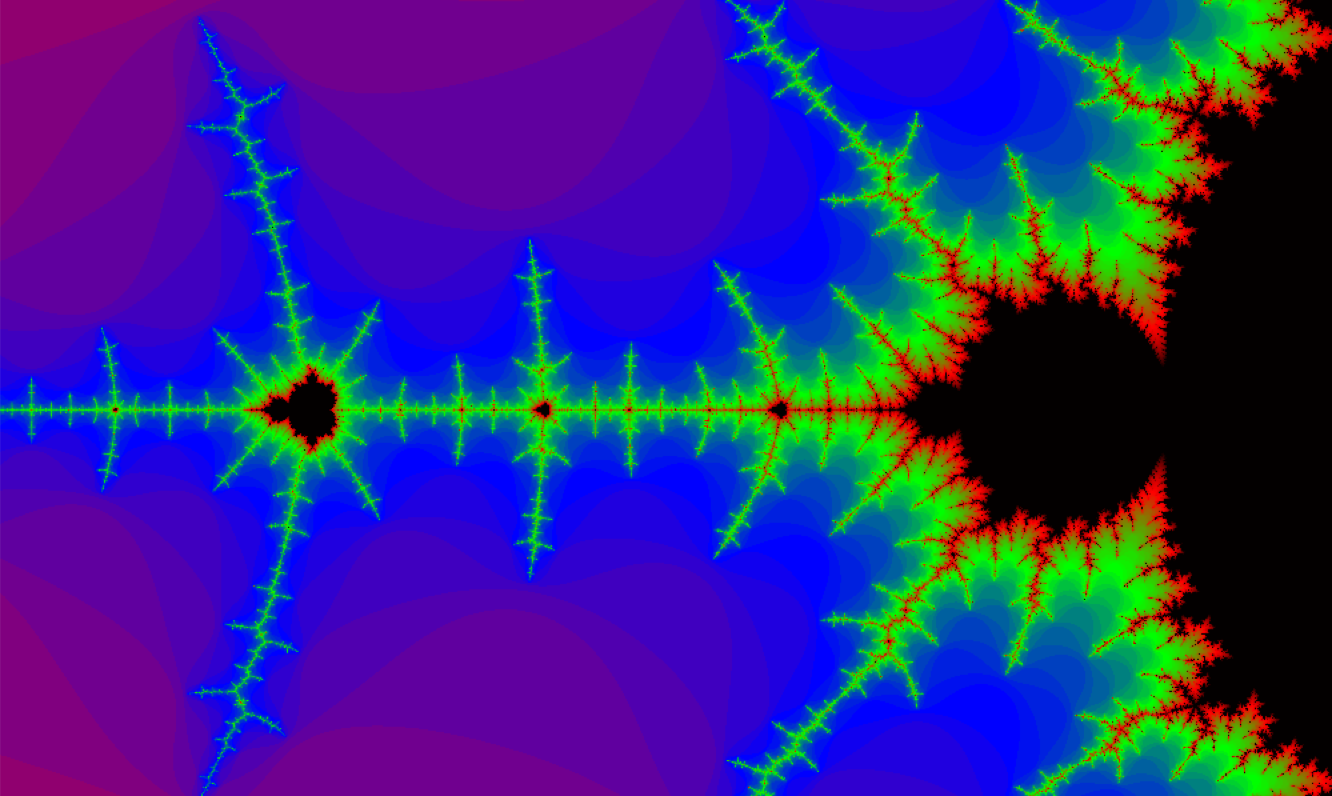Plotting the Mandelbrot Set
 The Mandelbrot set, rendered using a few lines of Python code |
The Mandelbrot set is the set of complex numbers $c$ for which $f_c(z) = z^2 + c$ does not diverge for the sequence $f_c(0), f_c(f_c(0))$, etc. Despite being governed by a fairly simple equation, the Mandelbrot set is quite the complex fractal (pun intended), host to many many different repeating patterns. Every now and then, I like to watch zooms of the mandelbrot set (here is an example). One time while I was watching one, I decided I wanted to actually plot the Mandelbrot set myself using Python. The process was relatively simple, however the image produced was fairly low quality, not to mention slow given that it was a recursive function called hundreds to thousands of times in Python. To solve both of these problems at once, I decided to write the code in C++ instead. Given that it was a simple process for Python, I had assumed it would only be slightly more difficult to write it in C++.
 The Mandelbrot set, zoomed in, rendered using C++ |
To start with, the project required that I use SFML, specifically for its graphics capabilities. I was not familiar with the library, so familiarizing myself with it presented a challenge. After that, it was a fairly straightforward (albeit tedious) process of assigning number of iterations to a color value, rendering the image, and allowing zoom/move functionalities to the image. Where the python version took several minutes to finish rendering the set, the C++ code took mere seconds. On top of this, it also allowed for zooming into the set. Unlike the Python code, in the C++ code, the image is redrawn with every zoom, so image quality is a constant.
As with most of these projects, the source code for the C++ version of the Mandelbrot set can be found on my GitHub.
Skills applied: Python, C++